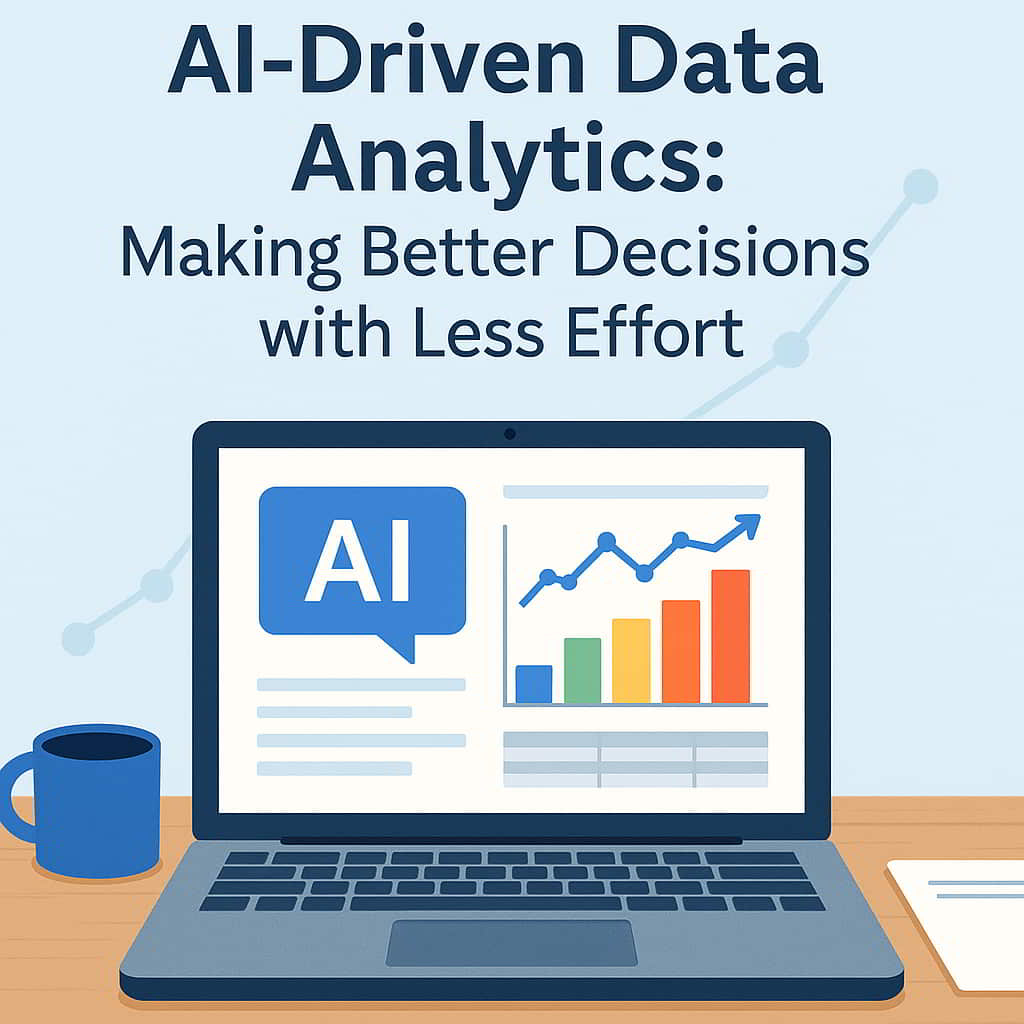The New Era of Business Intelligence
Small and medium-sized companies used to struggle with complex analytics platforms designed for large enterprises. Today, AI-powered analytics tools change that reality. They help teams understand trends, track performance, and predict outcomes without the need for data scientists.
Artificial intelligence automates the hardest part of analysis — collecting, cleaning, and interpreting large volumes of data. Instead of reading spreadsheets, users receive clear summaries, visuals, and recommendations in natural language.
Modern platforms use machine learning to find hidden correlations. They can show why sales dropped last week, which campaigns drove conversions, or which customer segment brings the highest profit. The advantage lies in automation and insight generation rather than manual reporting.
How AI Simplifies Data Analysis
Automated data collection
AI systems connect to CRMs, accounting software, and marketing tools, pulling all information into a single dashboard. Data from Google Ads, Shopify, or HubSpot updates in real time. This reduces human error and ensures consistent reporting across departments.
Smart data cleaning
Duplicate entries, missing values, or inconsistent formats often make traditional analysis slow. AI cleans and standardizes data automatically. Algorithms learn the structure of datasets and correct irregularities before reports are created.
Natural language queries
Instead of writing formulas, users can ask questions like “What were our top products in July?” or “Which region had the highest customer retention?” The AI translates these questions into database queries and presents the answer instantly with charts or tables.
Predictive insights
Machine learning models detect early signals of change. For example, an AI dashboard might forecast slower sales in a region based on web traffic decline or seasonality. This proactive view allows decision-makers to adjust before problems escalate.
Key Tools for SMBs in 2025
| Tool | Core Features | Ideal Use |
|---|---|---|
| Zoho Analytics | Unified dashboards, AI assistant for queries, automated trend detection | All-in-one analytics for small teams |
| Microsoft Power BI with Copilot | Natural language insights, integration with Office suite, forecasting | Companies already using Microsoft 365 |
| Google Looker Studio | Free visualization tool with AI-assisted exploration | Marketing and e-commerce performance tracking |
| Tableau GPT | Generative explanations and storytelling with data | Medium-sized businesses needing deep visual analysis |
| ChatGPT Advanced Data Analysis | Upload files, run calculations, and summarize insights conversationally | Quick ad-hoc analytics without specialized staff |
| Klipfolio | Real-time business dashboards with AI alerts | Startups and agencies managing multiple clients |
These tools make analytics accessible to non-technical users while keeping scalability for growing companies. The combination of automation, visualization, and predictive models enables fast, evidence-based decisions.
Implementation Strategy
Step 1: Define business questions
Before adopting any tool, companies should clarify what they want to measure — such as revenue drivers, customer churn, or campaign ROI. Clear goals help the AI focus on relevant metrics.
Step 2: Integrate existing systems
Connecting CRM, payment, and marketing data is essential. Most tools offer connectors or APIs that sync automatically, ensuring the analytics engine has full context.
Step 3: Set up dashboards
AI dashboards should be simple, visual, and interactive. Teams need only a few key performance indicators to start: sales trends, cost ratios, and engagement metrics. The system can later expand as data grows.
Step 4: Train teams
Even the most advanced platform is effective only when employees use it daily. Short internal training sessions or guided tours from the provider help ensure adoption.
Step 5: Monitor and adjust
Analytics is a living process. Regularly reviewing dashboards helps the AI refine its predictions and keep the insights relevant to current business conditions.
